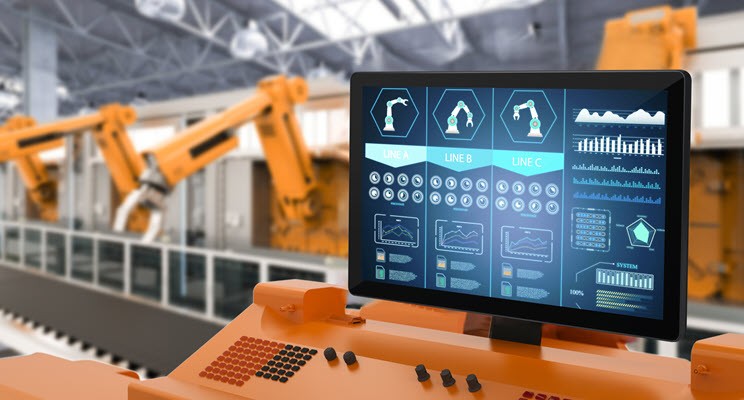April 13, 2021
Upgrade Your Manufacturing With Android for Industry 4.0Upgrade Your Manufacturing With Android for Industry 4.0

When most people imagine modern manufacturing, they picture robotic arms and other machinery performing specific tasks on an item and then shuttling it down the assembly line.
They’re actually thinking of the innovations brought in by Industry 3.0, which was transformational technology in the middle of the 20th century. It was a huge leap forward for manufacturing, bringing with it automation and computerization on a scale that wasn’t possible in the past.
The past several years have ushered in Industry 4.0, in which devices are connected and communicating with each other through Android OS or another operating system, all while uploading terabytes of data into the cloud. Using next-generation technology — such as virtual and augmented reality, artificial intelligence, neural networks, and machine learning — they can even make decisions without human interaction. Let’s put it another way: Those robotic arms are now talking to each other and are able to figure out more efficient ways to do their jobs. And it goes far beyond the assembly line. Industry 4.0 technologies have been used to help commercial airlines get refueled 10 percent faster and to assist Formula One teams in designing composite parts that give their cars a competitive edge.
Autosys Industrial Solutions, which works with companies updating their manufacturing capabilities, took a close look at how implementing Industry 4.0 affected its clients. It found 15% to 20% improvements in production, 35% to 40% reductions in downtime, and 65% to 70% increases in productivity.
Industry 4.0 — sometimes called the Industrial Internet of Things, or IIoT — is clearly the future for manufacturing, but are companies ready? In an annual survey conducted by Deloitte, the professional services network, companies with comprehensive strategies for implementing Industry 4.0 see more sustained growth. But only a third of chief experience officers say that their companies are prepared for the challenges of the new technology.
If your company is considering moving to Industry 4.0, here are four easy steps to get you started:
1. Do your homework. Many buzzwords swirl around Industry 4.0, including the Internet of Things and Internet of Services. Ignore these for the time being and focus on your goals, which might be resolving bottlenecks in your system or achieving more accuracy in planning and scheduling.
2. Find the right partner. You can’t do this alone, so find a partner who can adeptly guide you through the process. Look for a company that is based nearby, has extensive experience in your sector, and has been around for more than a few years. Make sure it understands the scope of your plans and the timeline.
3. Settle on an operating system. When it comes to manufacturing, many companies of all sizes are turning to Android OS. A survey by the research firm IDC found that of 250 multinational corporations based in the U.S., 77% prefer Android. Devices powered by Android for Enterprise can track real-time data, lower costs, and increase efficiency.
4. Invest in rugged hardware. Equipment deployed on the shop floor is going to take a beating. Look for hardware that has touchscreens that will stand up to constant use and tough exteriors that can handle an industrial environment. Elo has created an ecosystem of devices purpose-built to work together, streamlining the communications channels in your enterprise.
The Elo Android-powered device portfolio, including the I-Series AiO, Elo Backpack compute module and compatible touchscreen monitors, is a great solution for manufacturing in sizes from 10 to 65-inches. It’s easily adaptable to all your needs around the shop floor. Need dashboarding to keep the team focused on key metrics? Elo’s high-definition displays are readable across the room.
Both the I-Series 4 and Backpack 4 are equipped for EloView®, a SaaS platform for automated device enrollment, content management, and remote device management and control. It enables system-wide updates, auto provisioning, and device management through an intuitive web interface. It’s widely used across commercial and manufacturing sectors and integrates seamlessly with next-generation Industry 4.0.